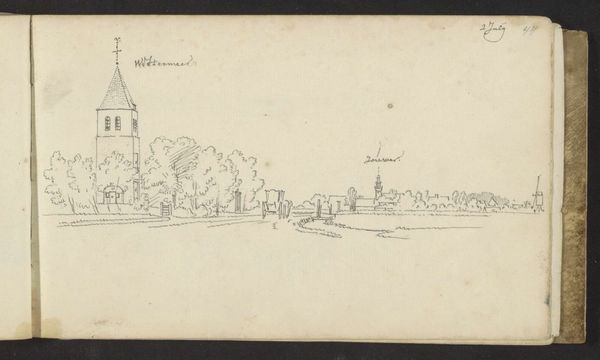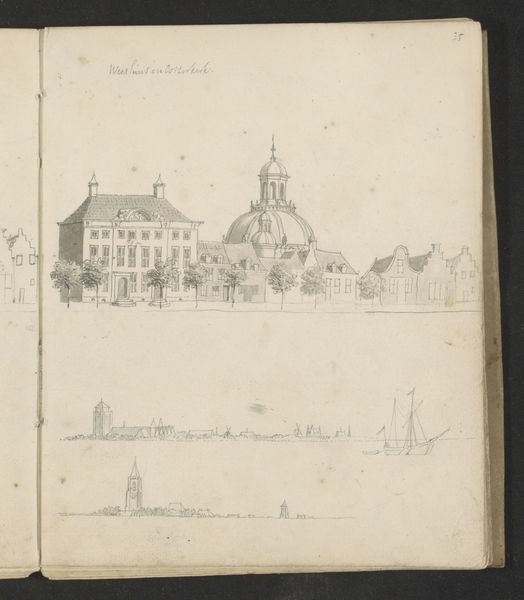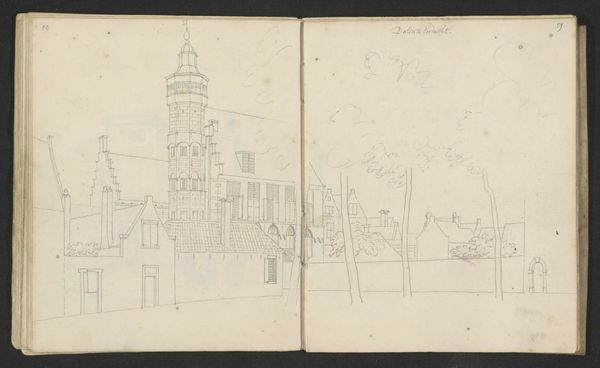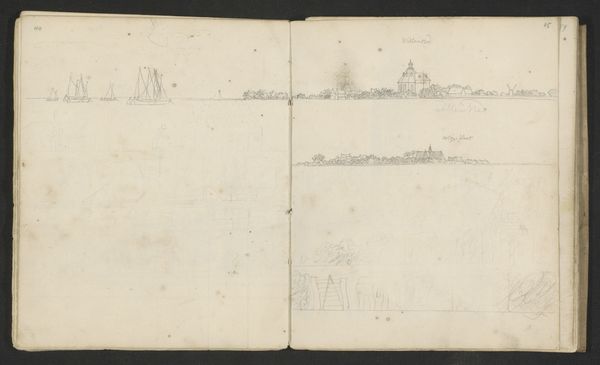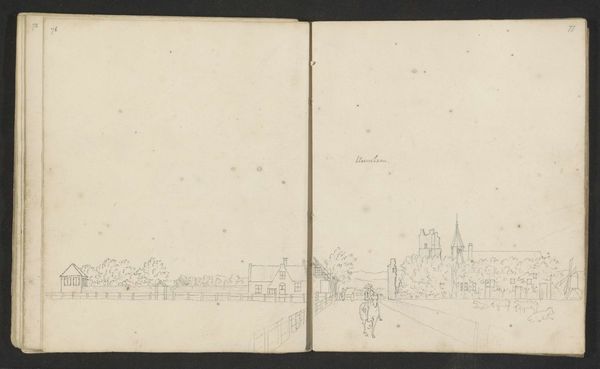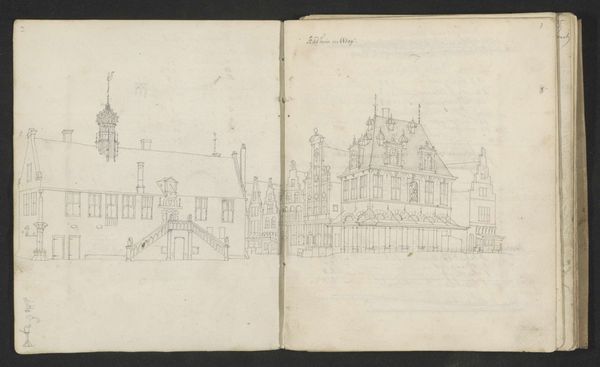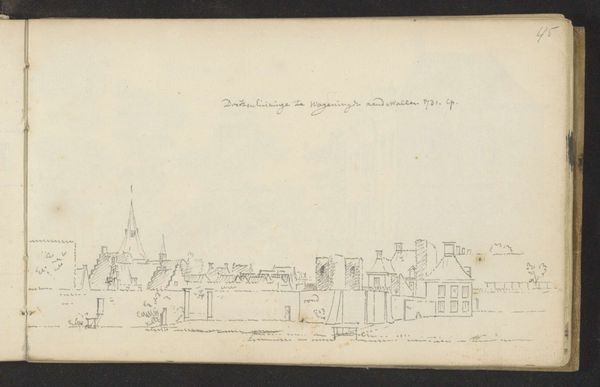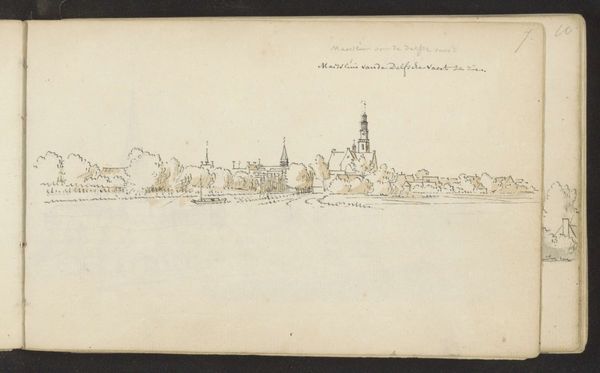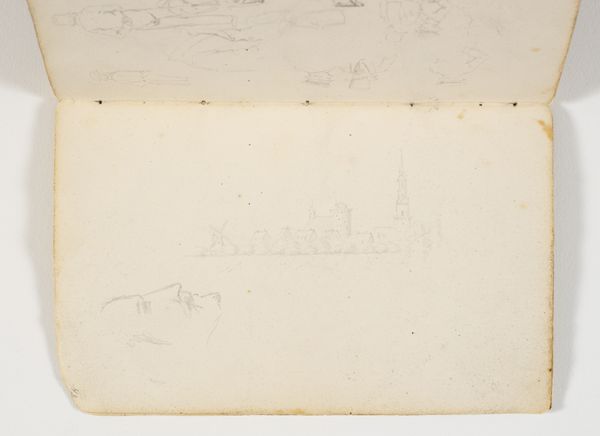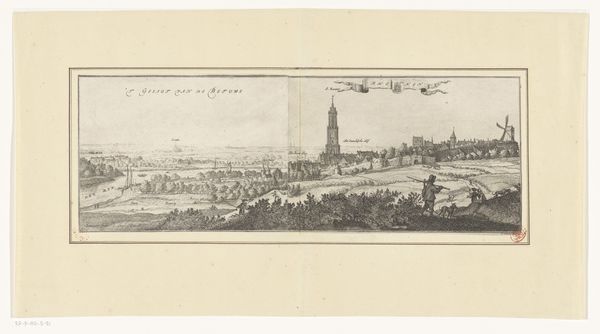
Gezicht op Middelburg met de Abdijtoren en het stadhuis c. 1728 - 1732
0:00
0:00
cornelispronk
Rijksmuseum
drawing, paper, ink
#
drawing
#
dutch-golden-age
#
landscape
#
paper
#
ink
#
cityscape
Copyright: Rijks Museum: Open Domain
Curator: What a remarkably serene scene. It almost feels as though time has stood still. Editor: It's ghostly, in a way, stripped bare and floating amidst all that white space of the sketchbook. A skeletal version of the town, would you say? Curator: Precisely! We're looking at a Dutch Golden Age drawing, circa 1728-1732, by Cornelis Pronk. He captured the vista of Middelburg, focusing on the Abbey Tower and the Town Hall. It is currently held in the Rijksmuseum. Pronk used ink on paper, favouring a minimalistic representation to offer, I suspect, an objective likeness of the city, or more of an emotional reflection. Editor: Yes, I am drawn to how unpopulated the scene feels. Is this just his technique, or might this image reflect something deeper about Middelburg’s socio-political landscape at the time? A city depleted perhaps after wars, or plagues. What statement does this artist intend to evoke? Curator: The bareness emphasizes, I'd say, the skyline. Towers reach heavenward, anchoring the scene in faith, progress, perhaps ambition. Look how the ink carefully traces those architectural outlines. There's reverence, a desire for clarity in these structures that cut through the sky. And what endures across history if not the structure. These are markers that help us define ourselves, giving us recognizable symbolic reference points to navigate through space and time. Editor: I see what you mean. Those vertical thrusts provide contrast to the sprawl of human-made structures nestled into the natural environment, yet, doesn't the lack of people normalize the historical amnesia around who benefitted from those beautiful structures? Was Middelburg equally available to all, or do we need to contextualize such idealistic iconography with the colonial powers at play during that historical period? What are some of the silences implied? Curator: An interesting point about silence; certainly, absences provoke a critical reflection on value, and the structures provide a visible frame for interpreting society at a given moment. Still, one might say that this image endures precisely because we are able to locate shared dreams inside of it. What survives, visually, from Middelburg then transcends merely materialist conditions, so we are moved to look towards these cultural echoes again and again, always evolving new frameworks for appreciation. Editor: True. It invites endless rounds of interpretations depending on our place within history, wouldn’t you say? This pushes me to ask more questions from it. Curator: And so it shall. May its visual symbolism forever elicit introspection.
Comments
No comments
Be the first to comment and join the conversation on the ultimate creative platform.

